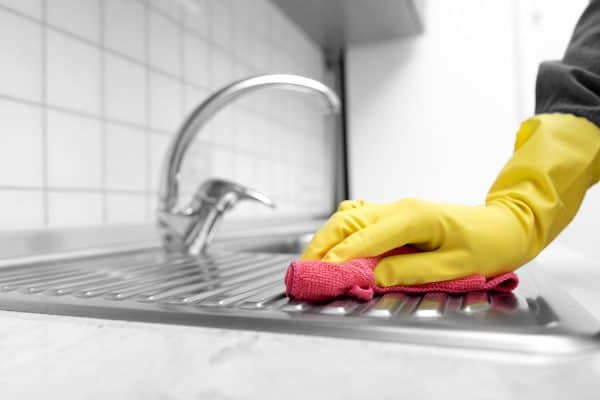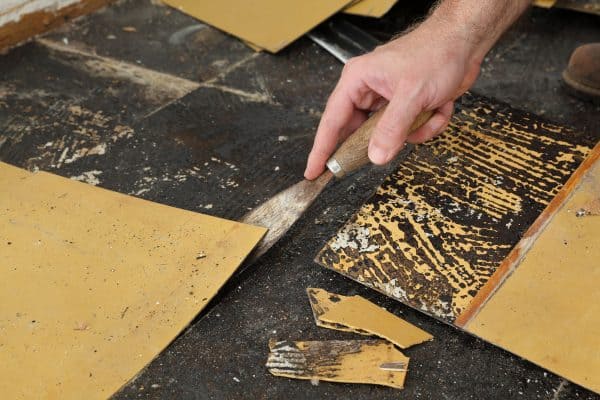Once your clothes are dirty, throw them in the washing machine. It will be clean and smell fresh again in no time. However, what happens if the washing machine smells like it needs cleaning itself? More specifically, it's starting to reek like sewage.
If you'd like to know what to do, we have some answers!
Laundry machines develop a sewage smell because of the environment it provides. It's moist and damp for long periods.
You can tackle the issue by cleaning the door's gasket with a toothbrush and white vinegar. If the odor persists, there might be an issue with the drain piping.
Nobody likes dealing with odors, especially sewage odors. There are a few reasons why this can develop on your washing machine.
The problem can be easy to fix. But, you'll have to know where it's coming from first. To learn more about this situation, keep reading.

How To Remove Sewage Odor From Washing Machine
Before we tackle the problem, we need to find where the odor is coming from. Unfortunately, you'll have to follow the scent with your nose. It shouldn't take long to locate the stench.
If it's coming from the door's gasket, consider yourself lucky. This area is the easiest to clean. Of course, you might want to know why the sewage stench develops in this area.
Why Your Washer Develops A Smell
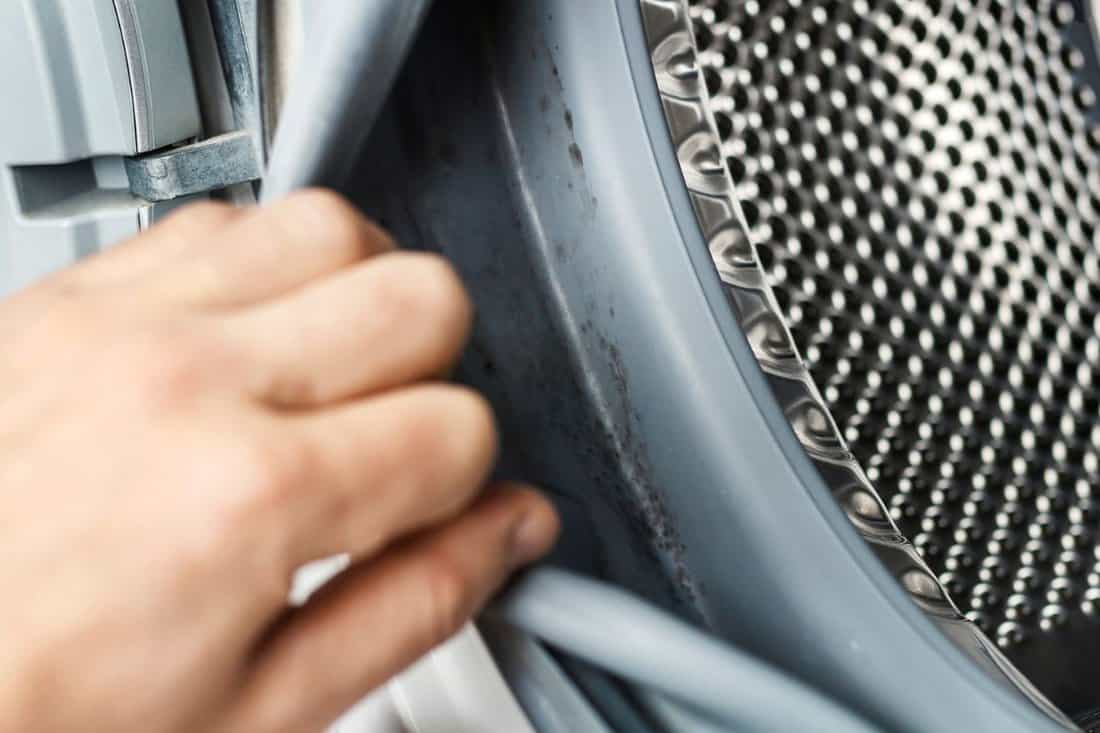
We may include affiliate links and curated AI content to highlight top design styles.
You can attribute the stench from the gasket to user error. Of course, this is unintentional on our part. When you use a washing machine, you don't think about the door's gasket.
It's a component that prevents water from leaking out of the machine. The problem is that nothing is drying the gasket after you finish using the washer. As you already know, it creates a favorable environment for bacterial growth.
In addition, the amount of detergent you use can also contribute to the problem. More specifically, if you're using too much detergent, there's an excess of residue that the machine isn't washing away.
Since that residue has nowhere to go until your next laundry day, it sits there and begins to develop an odor. That's all there is to it!
It's a combination of water that doesn't evaporate quickly and detergent that the machine isn't washing away.
Cleaning the Washer
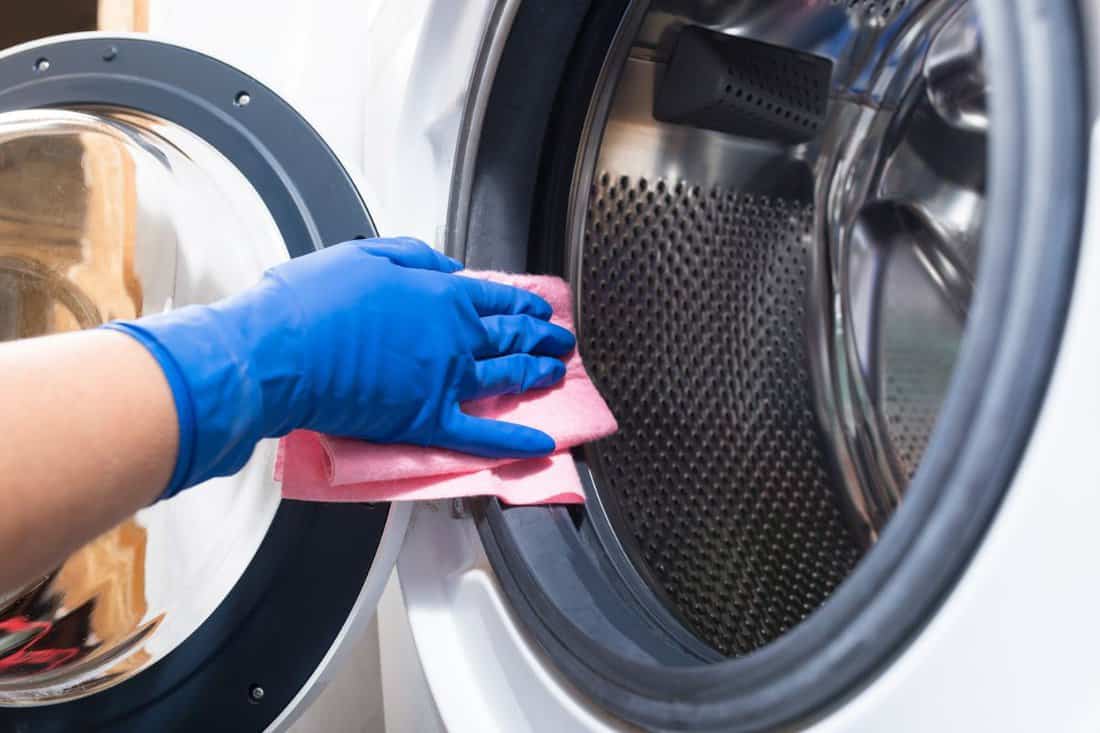
Now we should know what's causing the sewage smell. We can remove it using a few tools. Fill a spray bottle with white vinegar.
Click here to see this white vinegar on Amazon.
Take the spray bottle and spray the inside of the machine with white vinegar. Let it sit inside while you're cleaning the gasket. A cleaning cycle should wash it all away. So, you don't have to worry about leaving a vinegar scent.
Afterward, spray a rag you don't mind ruining with vinegar. Wipe all areas of the gasket. Make sure to remove any buildup you see along the way. If you have q-tips on hand, dip them in the vinegar and clean all the crevices of the gasket.
Click here to see these cotton swabs on Amazon.
Filters and Detergent Dispenser
Locate your washer's filters. You can typically find it at the bottom of the machine. There might be a line you can pull to drain the washer. If so, grab a container and drain it.
Repeat the process as necessary. If your washer has a filter, take it out and remove any debris. Depending on how much it stinks, you might want to consider submerging it in white vinegar for a few minutes.
Rinse it in the sink afterward. Of course, don't forget to clean the detergent dispenser. You don't want detergent building up anywhere in the machine.
Consult your user's manual to learn how to remove and clean it.
Running A Cleaning Cycle
Once you finish cleaning the machine manually, you'll want to run a cleaning cycle. How you go about doing this depends on the washer you own. You'll have to consult your user's manual to see what the manufacturer recommends.
If you can't find a button that activates the cleaning cycle, run a heavy-duty load instead. Any setting that makes the machine use hot water should suffice.
As you're running the cycle, observe what's happening inside. Since there's no detergent or cleaners, water should be the only thing visible.
If you see a lot of soap suds, you've found another culprit of the sewage odor. You'll need to get rid of this soap sud buildup. However, a simple cycle won't do enough to remove it.
Take a gallon of white vinegar. Then, start a cleaning cycle. As the machine is filling itself with water, pour the gallon inside. This way, you can blend it with the incoming water.
Once the cleaning cycle finishes, the sewage odor should no longer be there! Here's a YouTube video demonstrating the process:
If you own a top loader washing machine, it will generally follow the same process. We'll leave a video demonstrating how to run a cleaning cycle:
Checking The Drain Piping
If the smell lingers after this extensive cleaning, there might be a bigger problem. More specifically, the water may not be draining correctly. It might not be draining at all!
Check the drain hose at the back of the appliance. There's a correct and an incorrect way to route it. The best way to determine if it's correctly installed is by the smell.
Therefore, the sewage smell coming from the drain piping likely means the piping is not set correctly.
Incorrect Drain Hosing
Water will sit in the drain trap when you don't route the drain piping correctly. As you might guess, that creates an environment that favors bacterial growth.
Pull the hose out. If you're unlucky, you'll find a ton of black muck coming out. That muck is creating the sewage smell.
You can fix this problem temporarily by pouring a cup of bleach down there. Then, let the bleach sit in there for a few hours. Do this before you plan on using the washing machine.
Here's a video demonstrating what we're discussing:
Setting the Hose Correctly
As mentioned, pouring bleach down the drain trap will only fix the odor problem temporarily. Bacteria grow in that area because of moisture. If you want to avoid the smell permanently, you'll need to adjust the drain hose.
It's an easy fix. Take the hose and pull it back. You don't want to cram it in there.
Instead, set it a fair distance in there. When you pull the hose, it should come out with a couple of tugs, not several. Of course, this is a little difficult to explain in words. So, here's a video by LG showcasing the correct way to make the connection:
How To Prevent The Odor From Coming Back
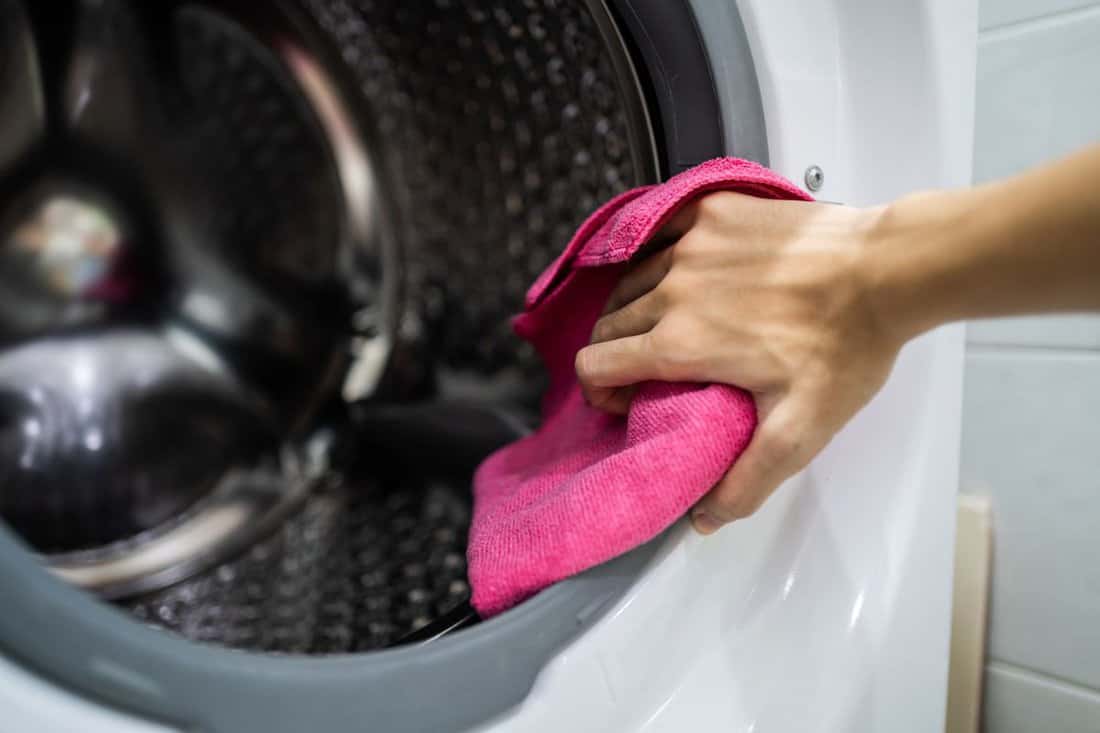
It's not controversial to say that nobody loves that sewage smell. Thus, it'd be best to practice ways to avoid it from coming around again. Fortunately, you can take some easy preventative steps.
Be Mindful Of How Much Detergent You Use
You can start by experimenting with your detergent usage. The general advice would be to use less of it. Otherwise, it leaves loads of soap suds that will smell worse over time.
How much detergent you use depends on the load. It also depends on the detergent you use. Some will have an HE label. This acronym signifies that it's a high-efficiency detergent. So, you don't need to use too much of it.
Two tablespoons of detergent should be sufficient for a normal load of laundry.
Letting the Excess Water Evaporate
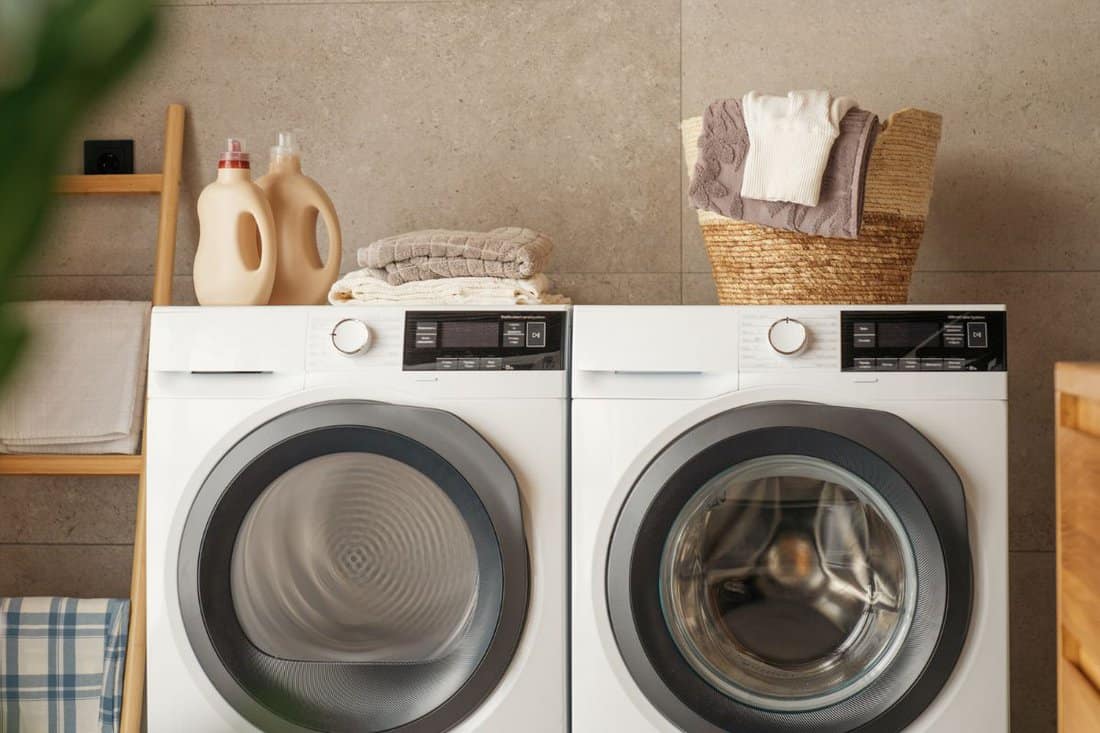
It's no longer a surprise. But, closing the door after using the washing machine isn't good. Closing the door will only encourage bacterial growth.
After you finish using the machine, leave it open. Allow the water to evaporate before closing it. Additionally, keep a towel handy for the gasket. Wipe the excess water off to let it dry faster.
Of course, don't forget to leave the detergent dispenser open too. It needs to air out. Washing machines will typically flush the dispenser with water to remove leftover detergent.
Maintenance
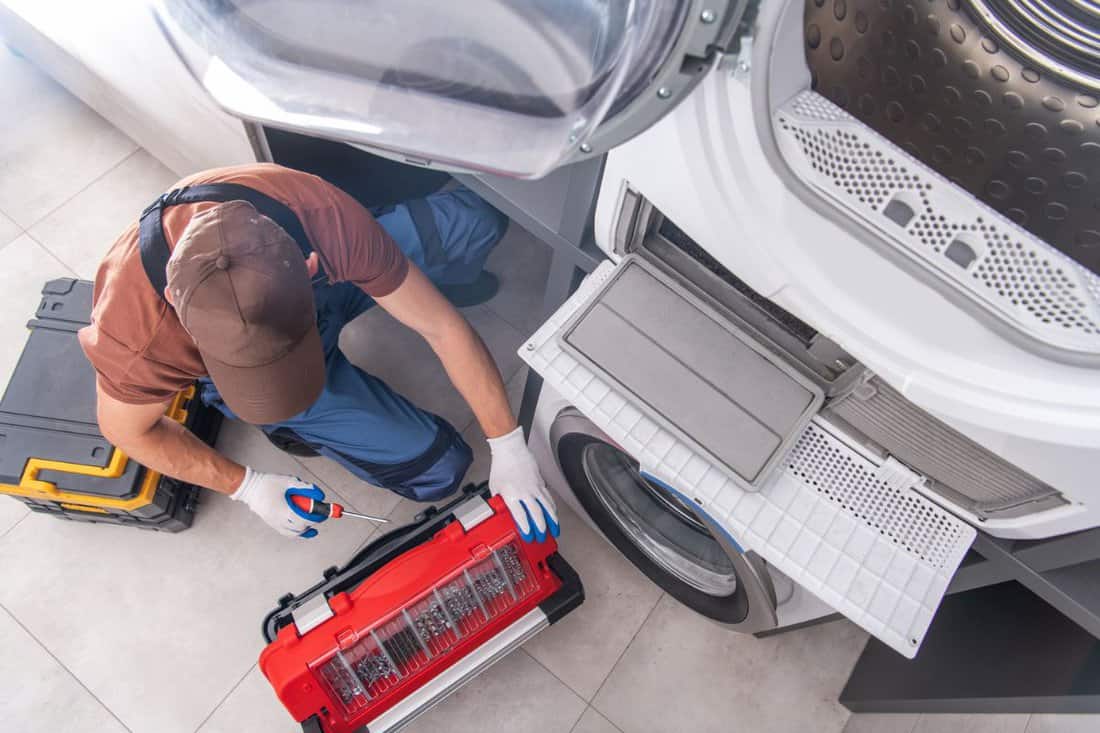
Finally, it's crucial to set up a cleaning routine for the washing machine every month or three months. How long you go without cleaning the washer depends on how often you use it. In any case, it always helps to do a deep cleaning.
This way, you can avoid accumulating debris and soap suds that can develop odors over time. If you follow these rules, that sewage smell shouldn't come back as often.
In Closing
Washing machines make keeping your clothes fresh an easy task. However, we need to take care of the washer too. As we've found, we can unintentionally neglect it. Hopefully, you don't encounter too much muck on the drain hose and the door gasket. We hope you found this informative.
Before you go, do you have other odor concerns? Are you curious to learn why a bedroom can stink in the morning? For more information, check out:
Why Does My Bedroom Smell In The Morning?
Does your house reek of onions? We can help you find out what's causing the problem. To learn more, check out:



